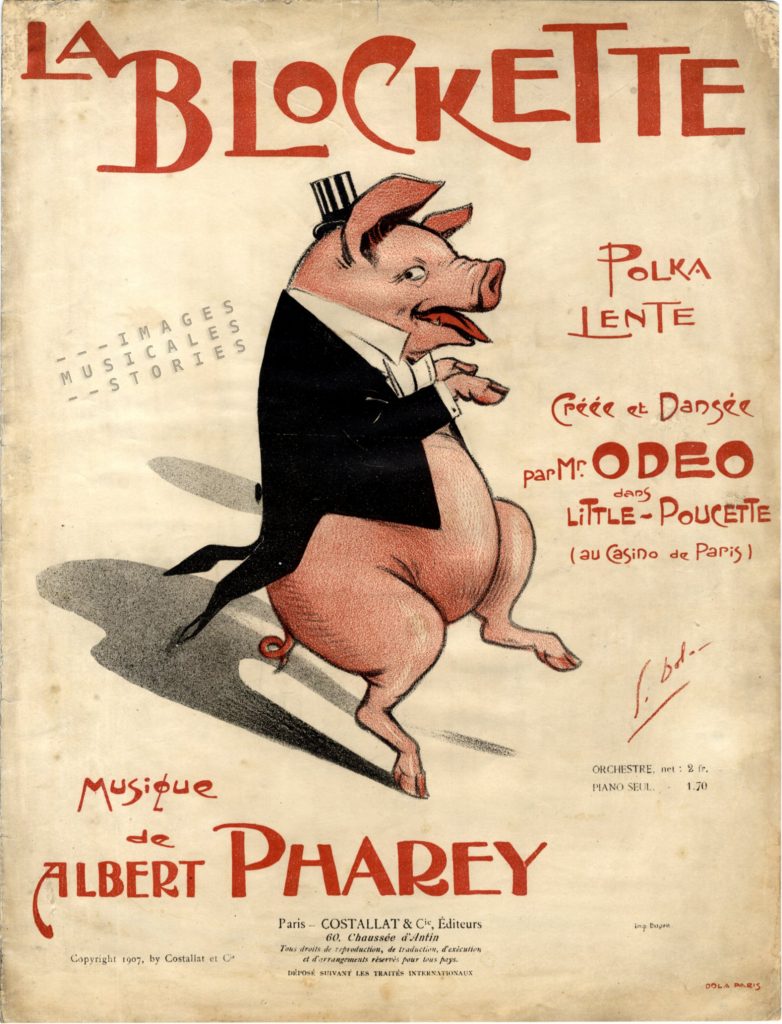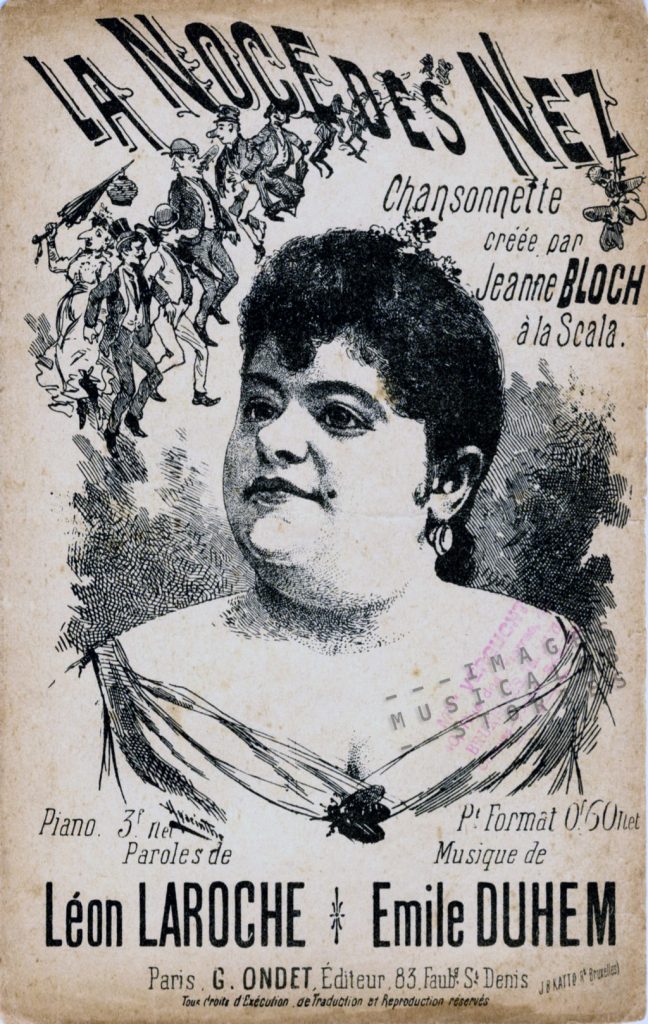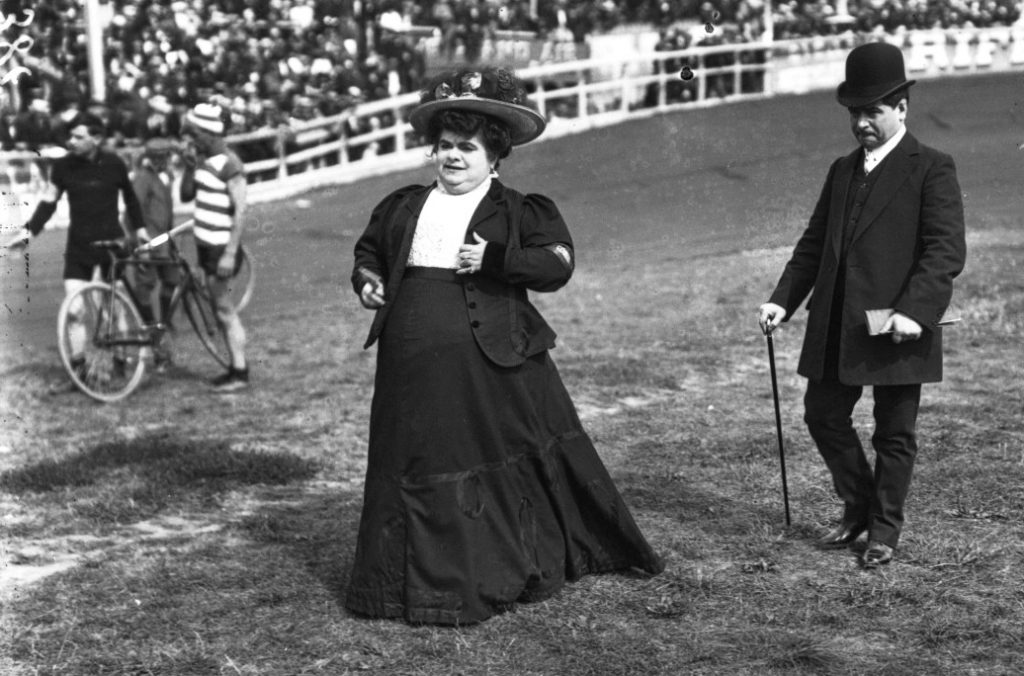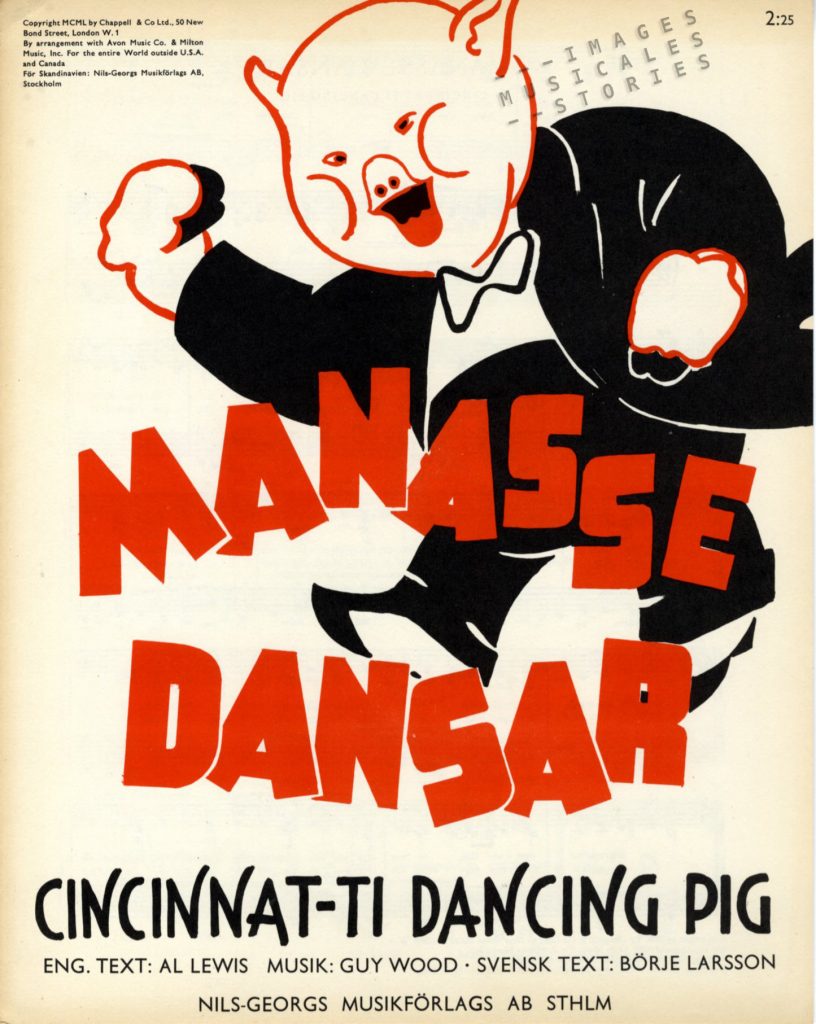
The Dancing Pig was a French vaudeville act at the beginning of the 20th century. In 1907 Pathé released a 4-minute film based on this act. A pig tries to seduce a young girl but is humiliated when she rips off his tuxedo. Suddenly standing stark naked, the humanoid swine nevertheless starts dancing with her. It is rather boring but at the end (3:46) it gets really creepy with a close-up of the tuxedoed pig wagging its tongue between its pointed teeth.
From one of our other sheet music, published the same year (1907), we discovered more about the origins of the Dancing Pig.

The man dancing in the Pathé film was Mr. Odeo, who had a dancing routine le Cochon Mondain. From 1906 until the early thirties, he toured the music-halls with this burlesque act.

La Blockette, the title of the sheet music and the name of the piggish polka dance, was also the artistic name of actress and singer Fanny Bloch (1863-1956). This is a bit confusing, as it is perhaps her older sister, comic singer Jeanne Bloch (1858-1916) who by her hefty looks inspired the name of the flabby polka.

Jeanne Bloch was known as la colossale chanteuse and it was said, not very nicely, that she measured 1.60 m in all directions.


It is a fifties tap-dance song, a rather awful ditty if you ask me: Riggedy, jiggedy, jiggedy, jiggedy jig-a-jig-jig! Oink Oink
More reading on Jeanne Bloch at the wonderful site of Du temps des cerises aux feuilles mortes.
